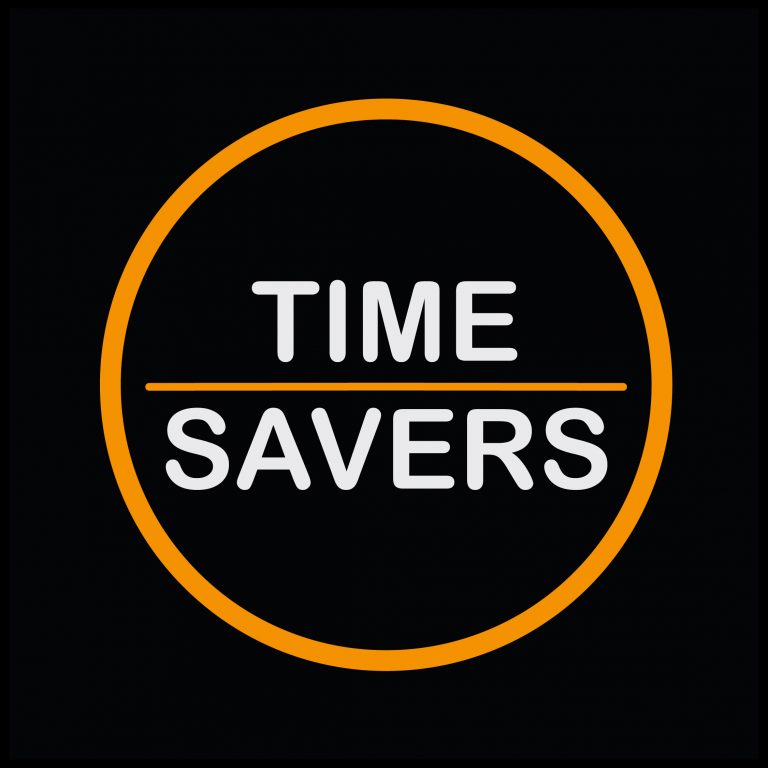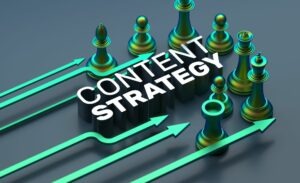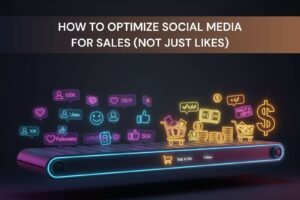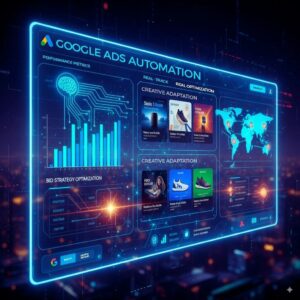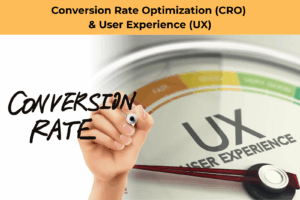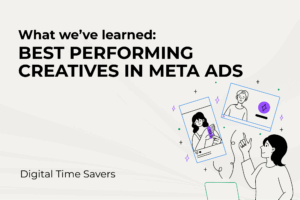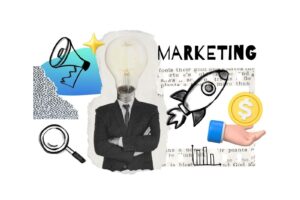You’re obsessing over your ROAS dashboard, tweaking ad campaigns by the hour, and measuring every dollar spent down to the penny. All great things to do. But meanwhile, your competitor with the “weaker” ads but stronger brand is quietly stealing your customers.
Sound familiar?
In the performance marketing gold rush, everyone’s chasing the same metrics…cost per click, conversion rates, return on ad spend. And they should be. These are important. But while you’re optimizing your way to incrementally better numbers, businesses with strong brands are playing a completely different game.
They’re paying less for better customers, getting higher conversion rates with “worse” ads, and building businesses that don’t crumble the second they pause their campaigns. The dirty secret of performance marketing? The best-performing campaigns are powered by brands people care about.
That’s why branding should still be an important part of your business’ mission. Think of it as the base of your marketing pyramid. If you have a strong brand, everything follows with ease. Smart branding makes every dollar you spend on performance marketing work harder.
In this article, we’ll uncover what branding is, why it still matters, and how you can leverage your brand to make money. Which is sweet, sweet music to every business owner’s ears. Ready to dive in? Let’s get started!
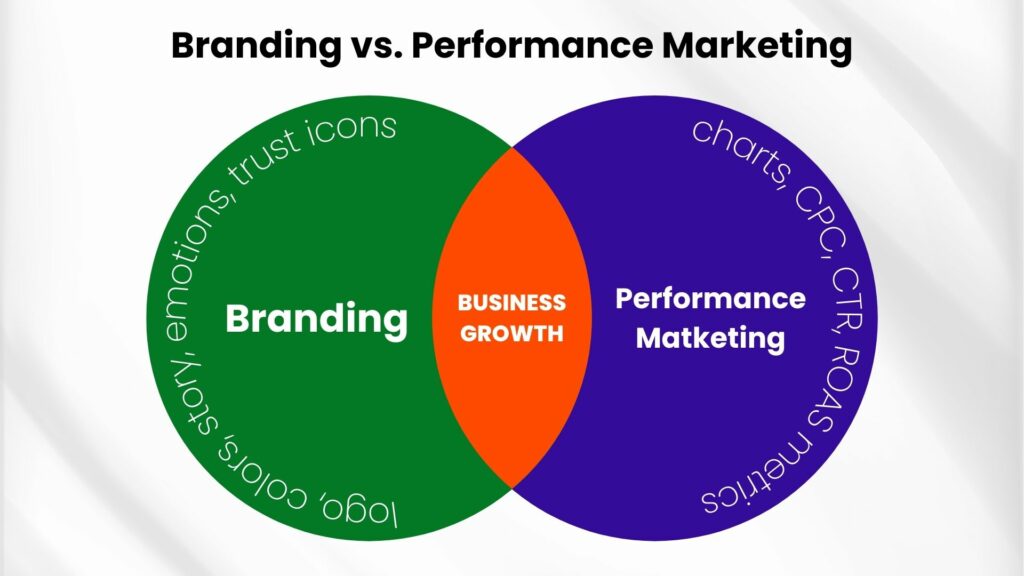
What Is Branding vs. Performance Marketing?
Let’s get clear on definitions before we dive deeper.
Branding is how your business lives in people’s minds. It’s your tone of voice, design, values, mission, and the emotional connection people have with you. It includes things like your logo, brand story, website experience, packaging, and how you show up on social media. Branding is what makes people remember you and choose you even when they’re not actively shopping.
Performance marketing is about direct, measurable results. You spend money on ads to get a specific outcome like clicks, conversions, sales, signups. It’s focused on return on investment and is heavily data-driven. Every dollar spent should be traceable to a business result.
Think about it this way…
Branding is why you recognize and trust Nike even before you see the swoosh. Performance marketing is the Google ad that convinces you to buy their latest running shoes right now.
Branding builds preference over time. Performance marketing captures demand at the moment.
Most successful businesses excel at both, but they serve different purposes in your marketing ecosystem. Branding creates the conditions where performance marketing can thrive.
Why Branding Still Matters (Even When You’re ROI-Obsessed)
1. Branding Builds Long-Term Trust
Performance campaigns can get you short-term results, but branding is what keeps customers coming back without you having to pay for their attention every single time.
People trust brands that feel consistent, familiar, and aligned with their values. When someone has seen your content multiple times, understands your story, and connects with your mission, they’re more likely to choose you…especially when competitors are offering similar prices or products.
For example, a sustainable skincare brand that consistently shares founder stories, shows real before-and-after results, and demonstrates packaging transparency isn’t just selling products, they’re building a relationship. When customers are ready to purchase, they remember the brand that made them feel confident about their choice.
This trust translates directly into business results. Customers who trust your brand are more likely to buy at full price, recommend you to friends, and stick with you when competitors try to steal them away with discounts.
Trust also reduces the friction in your sales process. Instead of having to convince people you’re legitimate with every interaction, strong branding does that work for you.
2. Branding Improves Paid Ad Performance
Strong branding doesn’t just support your ads, it makes them perform better and cost less to run.
When people recognize your brand, your ads stop feeling like interruptions and start feeling like helpful reminders. Your click-through rates improve because people already have positive associations with your business. This creates a compound effect…higher CTRs lead to lower costs per click, which improves your overall ROAS.
The platforms reward this behavior too. Facebook and Google’s algorithms favor ads that get engagement, and branded businesses naturally get more engagement because people trust what they recognize.
Think about your own behavior. When you see an ad from a brand you know and like, you’re more likely to click it than an identical ad from a company you’ve never heard of. You’re also less likely to immediately scroll past it.
This recognition advantage becomes even more powerful in competitive markets. When your audience is seeing ads from five different companies selling similar products, the one they remember is the one that wins.
The business impact is measurable: companies with strong brand recognition consistently see higher engagement rates, lower acquisition costs, and better customer lifetime values from their paid campaigns.
3. Branding Reduces Your Dependence on Paid Ads
When you only invest in performance marketing, you’re essentially renting your audience. Stop paying, and the traffic stops flowing.
A strong brand, however, generates its own momentum. People start searching for you by name, recommending you to friends, and following your content because they genuinely want to hear from you. This organic attention doesn’t disappear when you pause your ad campaigns.
Brand-driven traffic is also higher quality. Someone who types your company name into Google is much more likely to convert than someone who clicked on a random ad. They’re already sold on you, they just need to complete the purchase.
This creates powerful business resilience. Companies that depend entirely on paid ads are vulnerable to platform changes, increased competition driving up costs, or budget cuts. But businesses with strong brands have multiple channels bringing in customers.
The economic impact is significant too. Organic brand searches typically convert at much higher rates than paid traffic, often with conversion rates 2-3x higher than cold traffic from ads. These customers also tend to have higher lifetime values because they’re choosing you specifically, not just responding to the best offer they saw that day.
Building a brand that generates organic demand takes time, but it’s one of the few marketing investments that gets more valuable over time instead of requiring constant fuel.
4. Branding Increases Customer Lifetime Value (CLTV)
Your performance ads might win the first sale, but your brand wins the second, third, and fourth purchase.
When customers connect with your brand emotionally, they don’t just buy from you once, they become repeat customers who are significantly more valuable to your business. Strong brands turn one-time buyers into loyal customers who purchase more frequently, spend more per transaction, and stick around longer.
The numbers tell the story. Acquiring a new customer costs 5-25 times more than retaining an existing one, and increasing customer retention by just 5% can boost profits by 25-95%. Branded businesses excel at retention because people develop relationships with brands they trust and identify with.
Think about the brands you’re loyal to. You probably pay premium prices, recommend them to friends, and give them the benefit of the doubt when something goes wrong. That’s the power of brand connection…it creates customers who choose you for reasons beyond price and convenience.
This emotional connection also makes customers less price-sensitive. When someone identifies with your brand, they’re willing to pay more because they’re buying into what your brand represents.
Look at companies like Apple, Patagonia, or even smaller direct-to-consumer brands like Glossier. Their customers don’t just use their products, they become advocates who drive word-of-mouth growth and create sustainable competitive advantages that performance marketing alone can’t replicate.
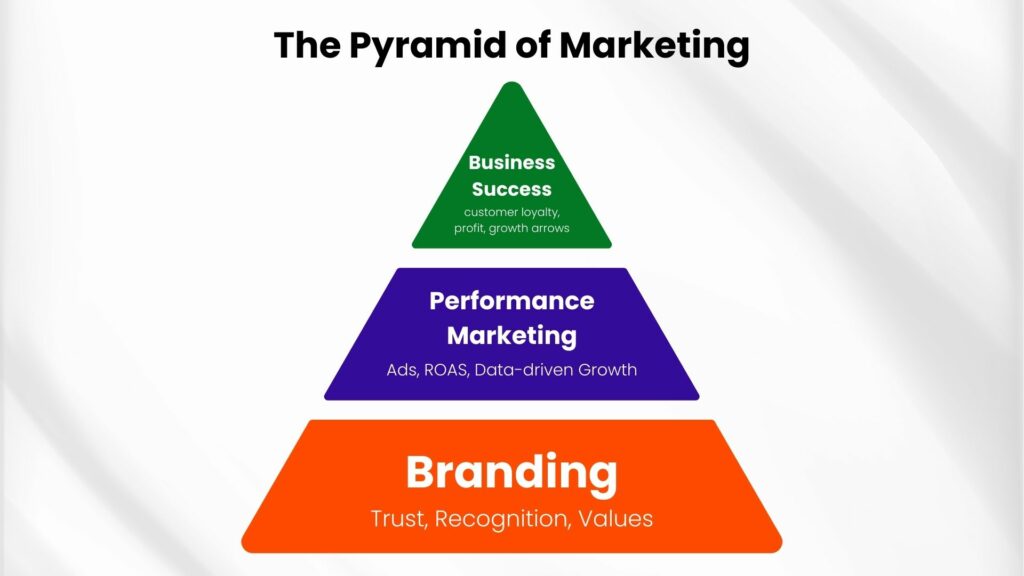
Why Performance Marketers Are Re-Thinking “Brand”
In this day and age, performance marketers are discovering that their tried-and-true playbook doesn’t work like it used to. The evidence is everywhere…
Customer acquisition costs are climbing across industries as more businesses compete for the same audiences. Meanwhile, the platforms themselves have become harder to work with. Apple’s iOS updates have limited tracking capabilities, making retargeting significantly more difficult. Google’s algorithm updates increasingly reward creative quality and user engagement over pure bidding power.
The days of buying your way to success with mediocre ads are ending. Smart performance marketers are realizing that brand recognition is becoming their secret weapon for lowering costs and improving results.
The result? The old “hack-and-scale” approach isn’t enough anymore. When people recognize and trust your brand, they’re more likely to click your ads, engage with your content, and convert at higher rates…all while costing you less to reach.
DTC Brands That Prove This:
- Liquid Death turned water into a $700M brand by leading with personality and irreverent branding, then using that recognition to make their performance ads cut through the noise.
- Oatly built global recognition through consistent, witty branding across all touchpoints, making their ads feel less like interruptions and more like content people actually want to see.
- Beis (Shay Mitchell’s travel brand) built a massive community and now dominates travel accessories
These brands succeed because they understand that strong branding makes every dollar spent on performance marketing work harder.
How to Balance Brand + Performance
The smartest marketers in 2025 aren’t choosing between brand and performance, they’re using each to amplify the other. Here’s how to integrate both approaches for maximum impact:
1. Infuse Brand DNA Into Your Performance Ads
Your ads shouldn’t just drive clicks, they should reinforce who you are as a brand. Keep your tone, visuals, and messaging consistent across all campaigns so people start recognizing you even when they’re not ready to buy.
Instead of generic “50% off today only!” ads, try incorporating your brand story, values, or customer success stories. Patagonia’s ads often focus on environmental activism rather than just product features. This approach builds brand recognition while still driving conversions.
Think beyond discounts and urgency. While these tactics work, they don’t differentiate you from competitors or build long-term brand value.
2. Create Content That Builds Brand While Supporting Performance
Develop content that serves dual purposes…building brand awareness and feeding your performance campaigns:
- Video content like behind-the-scenes footage, founder stories, and customer testimonials become high-performing ad creative that feels authentic rather than salesy.
- Organic social media that showcases your brand personality creates a library of content you can promote to broader audiences through paid campaigns.
- Email marketing with personality keeps your brand top-of-mind while nurturing leads that might not have converted from your first touchpoint.
- Educational content positions you as an expert while creating valuable retargeting audiences of people genuinely interested in your space.
3. Track Success Beyond Traditional Performance Metrics
While ROAS and conversion rates remain important, successful brand-performance integration requires broader measurement:
- Direct traffic increases show that people are actively seeking out your brand, not just responding to ads.
- Branded search volume indicates growing brand awareness…when people start Googling your company name, you know your brand is sticking.
- Social engagement metrics reveal how well your brand messaging resonates beyond just driving immediate sales.
- Return customer rates demonstrate whether your brand-building efforts are creating lasting relationships, not just one-time transactions.
The goal is creating a marketing ecosystem where your brand makes your performance ads more effective, and your performance data informs your brand strategy.
Make sense? Good.
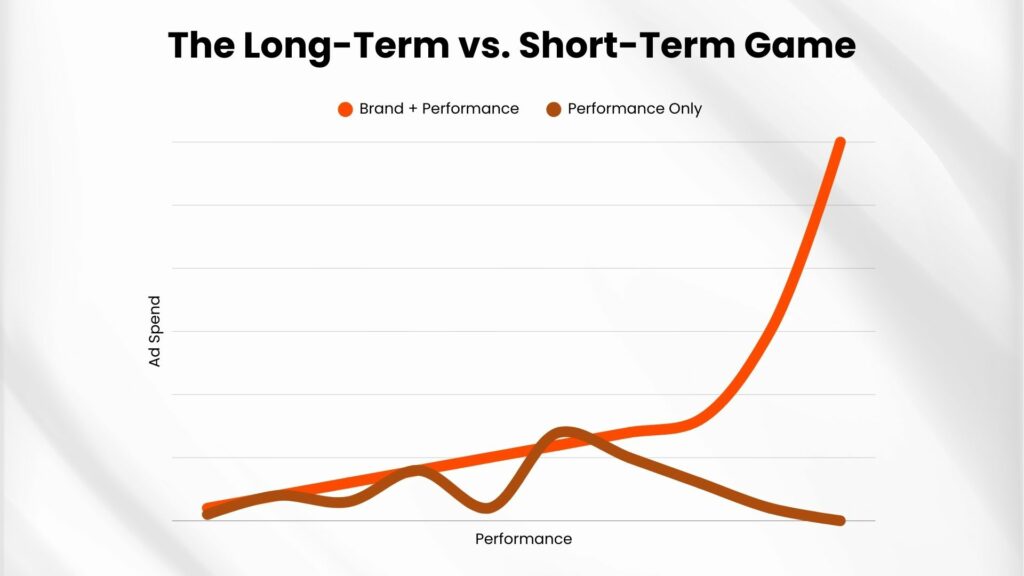
When to Prioritize Branding
Feeling like your brand isn’t strong? Overwhelmed by starting over? Don’t worry! Not every business needs to prioritize branding at the same level or at the same time. Here are the key scenarios where investing more heavily in brand-building becomes crucial:
- Launching a new product or service – When you’re introducing something new to market, people need to understand what you do and why they should trust you. Brand-building creates the foundation that makes your performance marketing more effective from day one.
- Entering a crowded, competitive market – When customers have dozens of similar options, brand differentiation becomes your competitive advantage. Price and features can be copied, but authentic brand personality cannot.
- Struggling with high customer churn or low retention – If people try your product once and never come back, the problem usually isn’t your performance marketing, it’s that your brand isn’t creating emotional connection or meeting expectations you’ve set.
- Scaling beyond $1M annually – At this revenue level, you’ve typically maxed out the “low-hanging fruit” in your market. Continued growth requires expanding beyond your immediate network and building broader brand recognition.
- Building subscription or community-driven businesses – These models depend on ongoing relationships rather than one-time transactions. Strong branding creates the trust and emotional connection necessary for people to commit long-term.
- Facing rising acquisition costs with flat conversion rates – When your performance metrics plateau despite increased spending, brand recognition often becomes the differentiator that improves ad performance and reduces costs.
In each of these situations, branding becomes a strategic necessity for sustainable growth. The businesses that recognize this early and invest accordingly are the ones that can scale efficiently while their competitors burn through advertising budgets with diminishing returns.
The Risks of Ignoring Branding
Businesses that focus exclusively on performance marketing without building brand equity often discover these painful realities:
- You become a commodity – Without distinctive branding, you’re competing purely on price and convenience. Customers see you as interchangeable with any competitor offering similar products. This forces you into a race to the bottom where margins shrink and profitability suffers.
- You’re trapped in bidding wars – When your ads look like everyone else’s and your value proposition isn’t clear, the only way to compete is by outspending competitors or offering deeper discounts. This creates unsustainable unit economics where acquisition costs eat into profits.
- Customer relationships are transactional – People buy from you once and immediately forget you exist. Without brand recall, you lose customers to whoever shows up next in their feed with a compelling offer. This leads to constant customer churn and makes growth expensive and unpredictable.
- You have zero defensibility – When ad costs rise, algorithm changes occur, or new competitors enter your market, you have no buffer. Branded businesses can weather these storms because customers actively seek them out. Performance-only businesses collapse when their acquisition channels become expensive or unavailable.
- You’re building someone else’s business – When customers can’t remember your name or distinguish you from competitors, you’re essentially paying to train them to buy products in your category and they might choose someone else next time.
- Your business becomes fragile – One iOS update, one platform policy change, or one competitor with deeper pockets can destroy your entire growth engine overnight. Brand recognition creates multiple paths to customers and reduces dependence on any single acquisition channel.
The most expensive lesson in business is learning that short-term performance tactics without long-term brand building creates a house of cards that eventually collapses.
Practical Tips to Start Building Brand in 2025
Building a brand doesn’t require a massive budget or complete marketing overhaul. Start with these foundational steps that immediately impact how customers perceive your business:
- Clarify your brand voice and stick to it – Decide whether you’re playful, professional, bold, educational, or something else entirely. Then use that voice consistently across all touchpoints. Mailchimp’s friendly, approachable tone or Monday.com’s energetic, colorful personality didn’t happen by accident, they made deliberate choices and committed to them.
- Nail down your visual identity – This goes beyond just having a logo. Establish your color palette, typography, photography style, and overall visual tone. Your Instagram posts, email headers, and ad creative should all feel cohesively “you.” Consistency builds recognition faster than creativity alone.
- Plan content that builds relationships, not just conversions – Create a content calendar that includes behind-the-scenes content, founder stories, customer spotlights, and educational material. Not everything needs to drive immediate sales. Some content should simply help people get to know and trust your brand.
- Master the art of storytelling – Stop leading with features and start with the “why” behind your product. What problem inspired you to start this business? What change are you trying to create? Stories stick in people’s minds far longer than product specifications.
- Turn customers into brand advocates – Encourage user-generated content, create community spaces, and showcase real customer stories. When people feel like part of your brand community rather than just purchasers, they become powerful word-of-mouth marketers.
- Transform your website into a brand experience – Your landing pages shouldn’t just sell products, they should communicate your brand values, personality, and story. People should understand what you stand for within seconds of arriving on your site.
The key is starting somewhere and being consistent. Brand building happens through accumulated touchpoints over time, not single campaigns.
Your Next Move: Start Building Today
Performance marketing will keep evolving. Algorithms will get smarter. Ad tools will get better. But at the heart of it, your brand is what makes everything else work more effectively and cost less over time.
You don’t need a million-dollar budget to build a strong brand. You need consistency, clarity, and genuine care for your customers’ experience.
To simplify the idea, think of branding this way…
It’s not about being everywhere (though that can help). The best branding is remembered, connects with your audience, and tells your story.
The businesses dominating in 2025 aren’t choosing between brand and performance. They’re using each to amplify the other, creating marketing engines that become more efficient and more profitable over time.
In a world where everyone’s fighting for the same attention and customers have endless options, being memorable is how you survive and thrive.
The question isn’t whether you can afford to invest in branding. It’s whether you can afford not to.
Ready to build a brand that makes your performance marketing work harder? Digital Time Savers helps businesses integrate brand strategy with performance marketing to create sustainable, profitable growth. We’ve seen firsthand how the right brand foundation can transform struggling ad campaigns into efficient customer acquisition machines. If you’re ready to level up, reach out to us today!
FAQ
-
Isn’t branding only important for big companies?
Not at all. Small businesses benefit the most from strong branding because it helps them stand out in competitive markets.
-
Can I do branding and still focus on performance?
Yes! The best strategy is a mix of both. Use branding to build trust and performance to convert.
-
How do I measure branding success?
Look at metrics like branded search volume, direct traffic, customer retention, and social media engagement.
-
What’s a quick way to improve my brand?
Start by improving your website design, social media visuals, and product packaging. Make sure your tone and messaging are consistent.
-
How much should I spend on branding vs. ads?
Start with 10–20% of your total marketing budget on brand development if you’re new, and adjust based on results.

